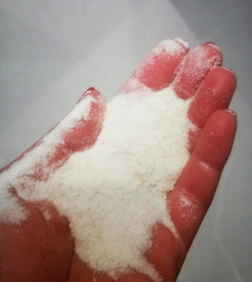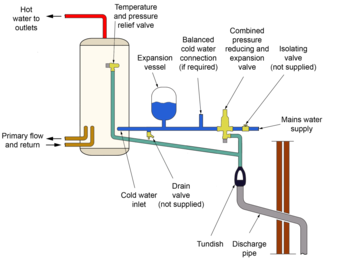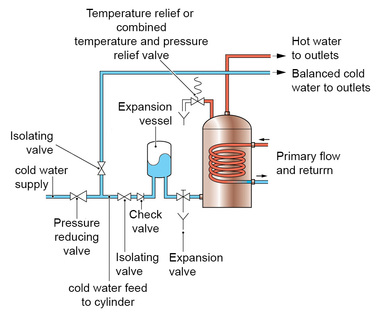Sand in the supply
Amended July 2024
By Dan Smith and Mark Fenning - Affinity Water Network Regulations

There are a number of places you might expect to find sand – on the beach, in a playground or a builders’ merchant perhaps! Unfortunately, some consumers found ‘sand’ in their tap water.
Over the past two years, Affinity Water has had a number of complaints from consumers about sand or a sand-like substance coming from either or both of their hot and cold water taps. The Water Regulations team were sent to investigate.
Investigation
Affinity Water quickly established the problem was down to the private plumbing system which was not as uncommon as they first thought.
The consumer, in this case, was astonished at the amount of ‘sandy material’ coming out of the taps.
After it was analysed, the suspicious sediment turned out to be, as suspected, lime-scale from the unvented cylinder.
Affinity Water identified 12 similar complaints from consumers all of whom had unvented hot water systems from a variety of manufacturers. A search of the internet revealed many reports of people sharing similar problems from across the UK.

What caused the problem?
What these cases had in common was that the plumbing arrangements allowed hot water containing lime-scale to be drawn into the cold water supply as it was being used. It was the location of the balanced cold water draw off point which was the critical factor. This can be seen in the diagram (Figure 1) which is typical of systems inspected.
Some combination valves are now being fitted which combine the pressure reducing valve with the expansion relief valve, so the balanced cold cannot be taken between the two valves.
In some cases, the problem was resolved easily by rearranging the plumbing systems – some of which had clearly not been installed as per the manufacturers’ instructions.
Further research uncovered that some manufacturer’s instructions lack the detail to ensure correct installation.

Preventing future occurrences
Manufacturers should be doing more to help their customers install their products correctly. Manufacturers must provide accurate instructions, including information on the correct connection points for balanced cold water draw offs.
Installers should always follow the manufactures instructions, and if they suspect they are incomplete or wrong, they should seek expert advice.
If there is no backflow protection between the balanced cold water connection point and the feed connection to the cylinder, installers should fit a single check valve. This should stop any hot water and lime-scale flowing back into the cold supply. Figure 2 shows the correct installation method.
TOP TIP: ✔ Always use properly qualified installers, such as WaterSafe, to ensure that products are installed properly. |
WaterSafe is the accreditation scheme for UK plumbers who are approved. WaterSafe is backed by local water companies. You can find a plumber on the online directory at watersafe.org.uk.
Your installer must also be Gas Safe Registered if they work on gas appliances.

